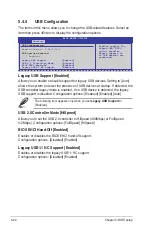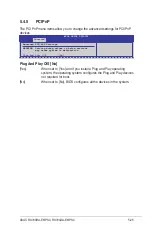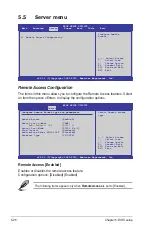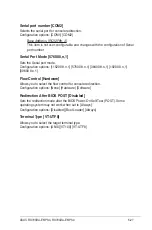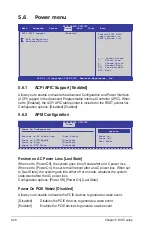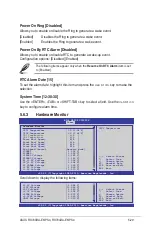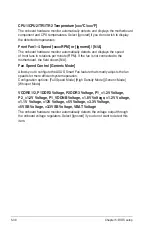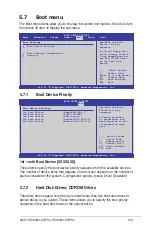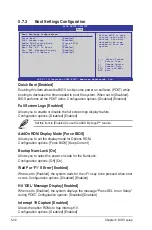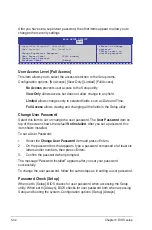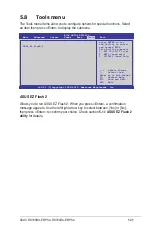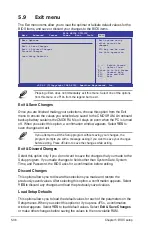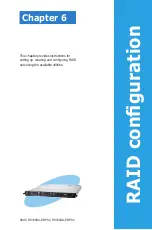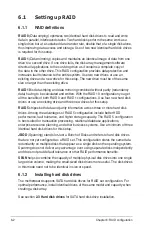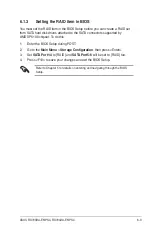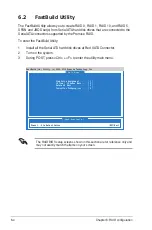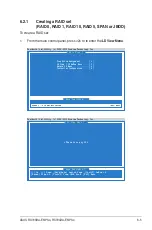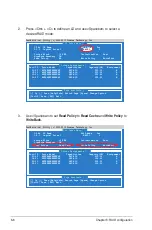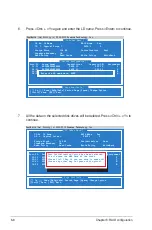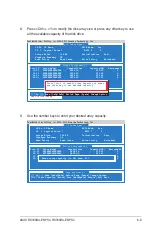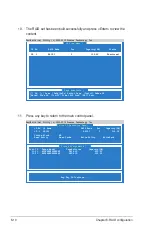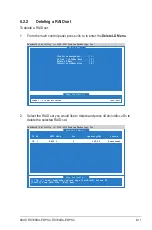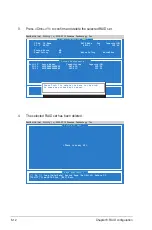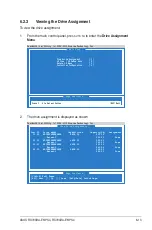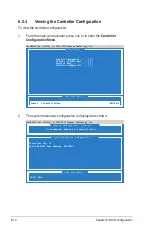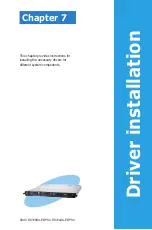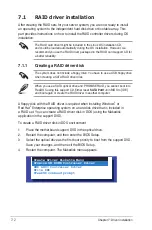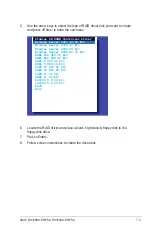
6-2
Chapter 6: RAID configuration
6.1
Setting up RAID
6.1.1
RAID definitions
RAID 0
(Data striping)
optimizes two identical hard disk drives to read and write
data in parallel, interleaved stacks. Two hard disks perform the same work as a
single drive but at a sustained data transfer rate, double that of a single disk alone,
thus improving data access and storage. Use of two new identical hard disk drives
is required for this setup.
RAID 1
(Data mirroring) copies and maintains an identical image of data from one
drive to a second drive. If one drive fails, the disk array management software
directs all applications to the surviving drive as it contains a complete copy of
the data in the other drive. This RAID configuration provides data protection and
increases fault tolerance to the entire system. Use two new drives or use an
existing drive and a new drive for this setup. The new drive must be of the same
size or larger than the existing drive.
RAID 10
is data striping and data mirroring combined without parity (redundancy
data) having to be calculated and written. With the RAID 10 configuration you get
all the benefits of both RAID 0 and RAID 1 configurations. Use four new hard disk
drives or use an existing drive and three new drives for this setup.
RAID 5
stripes both data and parity information across three or more hard disk
drives. Among the advantages of RAID 5 configuration include better HDD
performance, fault tolerance, and higher storage capacity. The RAID 5 configuration
is best suited for transaction processing, relational database applications,
enterprise resource planning, and other business systems. Use a minimum of three
identical hard disk drives for this setup.
JBOD
(Spanning) stands for Just a Bunch of Disks and refers to hard disk drives
that are not yet configured as a RAID set. This configuration stores the same data
redundantly on multiple disks that appear as a single disk on the operating system.
Spanning does not deliver any advantage over using separate disks independently
and does not provide fault tolerance or other RAID performance benefits.
SPAN
helps to combine the capacity of multiple physical disk drives into one single
large drive volume, making the small-sized disk drives more useful. The disk drives
in this mode need not to be identical in size or speed.
6.1.2
Installing hard disk drives
The motherboard supports SATA hard disk drives for RAID set configuration. For
optimal performance, install identical drives of the same model and capacity when
creating a disk array.
See section
2.3 Hard disk drives
for SATA hard disk drive installation.
Содержание RS700DA-E6/PS4
Страница 1: ...RS700DA E6 PS4 RS704DA E6 PS4 1U Rackmount Server User Guide ...
Страница 20: ...Chapter 1 Product introduction 1 10 ...
Страница 42: ...Chapter 2 Hardware setup 2 22 ...
Страница 50: ...Chapter 3 Installation options 3 8 ...
Страница 52: ...Chapter 4 Motherboard information 4 2 4 1 Motherboard layout KGNH D16 For RS700DA E6 PS4 ...
Страница 53: ...ASUS RS700DA E6 PS4 RS704DA E6 PS4 4 3 KGMH D16 QDR For RS704DA E6 PS4 ...
Страница 72: ...4 22 Chapter 2 Hardware information ...
Страница 147: ...ASUS RS700DA E6 PS4 RS704DA E6 PS4 7 25 9 Click your preferred options and click Finish to exit the wizard ...

